WHAT ARE THE BEST PLACES TO VISIT IN SRI LANKA OFF THE BEATEN TRACK?
Being a tropical country Sri Lanka has natural wealth at its best. Sinharaja rainforest is undoubtedly the most renowned and valuable natural wealth of Sri Lanka. Sinharaja rainforest is comparable to forests such as Amazon and Kongo, it has a breathtaking and fascinating collection of Fauna and Flora as well as landscapes…these are the BEST PLACES TO VISIT IN SRI LANKA OFF THE BEATEN TRACK.
Table of Contents
- SRI LANKA OFF IS THE BEATEN TRACK
- WHAT ARE THE 24 BEST PLACES TO VISIT IN SRI LANKA OFF THE BEATEN TRACK AND DISTANCE FROM COLOMBO?
- WHAT ARE THE MOST POPULAR ACTIVITIES TO DO IN SRI LANKA OFF THE BEATEN TRACK?
- WHAT ARE THE 9 POPULAR OFF-THE-BEATEN-TRACK TOURS OF SRI LANKA?
- SRI LANKA OFF THE BEATEN TRACK TOURS TO SINHARAJA RAINFOREST
- SRI LANKA OFF THE BEATEN TRACK BLUE BEACH ISLAND SOUTHERN PROVINCE
- SRI LANKA IS OFF THE BEATEN TRACK -HAPUTALE
- SIGIRIYA IS OFF THE BEATEN TRACK
- What are the popular tourist attractions in Sigiriya?
- KATARAGAMA-OFF THE BEATEN TRACK TOURIST ATTRACTION IN SRI LANKA
- DOVA CAVE TEMPLE -OFF A BEATEN TRACK TOURIST ATTRACTION IN THE MOUNTAIN
- VISITING OFF-THE-BEATEN-TRACK TOURIST ATTRACTION- MULGIRIGALA
- NEGOMBO LAGOON
- BUNDALA NATIONAL PARK- OFF A BEATEN-TRACK TOURIST SITE TO SPOT WILDLIFE
- MUTHURAJAWELA WETLAND-OFF THE BEATEN TRACK TOURIST ATTRACTION COLOMBO
- WHAT IS THE POPULAR OFF-THE-BEATEN-TRACK TOURIST ATTRACTION IN SRI LANKA FOR DIVING AND SNORKELLING?
- OFF THE BEATEN TRACK TOURIST ATTRACTION SRI LANKA- UDAWALAWE NATIONAL PARK
- SPOTTING LEOPARDS AT OFF-THE-BEATEN-TRACK TOURIST ATTRACTION WILPATTU
- OFF-THE-BEATEN-TRACK TOURIST ATTRACTION SRI LANKA FOR ADVENTURE SPORTS-KITULGALA
- OFF THE BEATEN TRACK TOURIST ATTRACTION FOR HIKING-ADMAS PEAK
- OFF THE BEATEN TRACK BEACHES SRI LANKA -KALPITIYA
- IFS POPHAM ARBORETUM
- OFF-THE-BEATEN-TRACK TOURIST ATTRACTION IN KANDY- AMBULUWAWA TOWER
- OFF THE BEATEN TRACK BEACH IN SOUTHERN SRI LANKA-JUNGLE BEACH
- PAHIYANALA GRANITE CAVE
- WARNAGALA FOREST
- OHIYA
- LUNU GANGA (BAWAS GARDEN)
SRI LANKA OFF IS THE BEATEN TRACK
Sri Lanka is a cultural melting point and home to a number of ethnic groups. Whether you have explored enough of Sri Lanka’s popular tourist attractions, or are just keen to drop into several less touristy places, there is an interesting blend of places to visit in Sri Lanka that are off the beaten track. Here are the 23 of the Best Places to Visit in Sri Lanka Off the Beaten Track.
WHAT ARE THE 24 BEST PLACES TO VISIT IN SRI LANKA OFF THE BEATEN TRACK AND DISTANCE FROM COLOMBO?
- Sinharaja rainforest – 158 km
- Blue Beach Island southern Sri Lanka – 100 km
- Haputale – 200 km
- Madu river wetland – 118 km
- Sigiriya Rock Fortress – 150 km
- Kataragama – 297 km
- Dova cave temple – 213 km
- Mulgirigala Buddhist temple – 211
- Negombo Lagoon – 37 km
- Bundala national park – 263 km
- Muthurajawela – 24 km
- Pigeon Island Marine Sanctuary – 278 km
- Udawalawe – 179 km
- Wilpattu National Park – 170 km
- Kitulgala – 80 km
- Adams peak – 150 km
- Kalpitiya Beach – 170 km
- IFS Popham Arboretum Sri Lanka –163 km
- Ambuluwawa Tower-127 km
- Jungle beach-145 km
- Pahiyangaka cave – 85 km
- Warnagala Forest – 110 km
- Ohiya -220 km
- Lunu Ganga – 75 km
WHAT ARE THE MOST POPULAR ACTIVITIES TO DO IN SRI LANKA OFF THE BEATEN TRACK?
- Sinharaja – rainforest trekking
- Blue beach island southern Sri Lanka – beach hopping, water sport, snorkelling, swimming, boating
- Haputale – mountaineering
- Madu river wetland – boating, explore aquatic Fauna&Flora
- Sigiriya Rock Fortress – trekking, exploring historical places
- Kataragama – exploring historical, religious places
- Dova cave temple – exploring historical, religious places
- Mulgirigala – exploring historical, religious places
- Negombo Lagoon – boating, explore aquatic Fauna&Flora
- Bundala national park – wildlife safari
- Muthurajawela – boating, explore aquatic Fauna&Flora
- Pigeon Island – diving, snorkelling
- Udawalawe – wildlife safari
- Wilpattu National Park – wildlife safari
- Kitulgala – adventure sports
- Adams peak – hiking and visiting the temple
- Kalpitiya Beach – boating, explore aquatic Fauna&Flora
- IFS Popham Arboretum – Sri Lanka – wildlife exploration
- Ambukuwawa Tower – wildlife exploration
- Jungle beach – beach hopping
- Pahiyanagala cave – Exploring a settlement belonging to stone age human
- Warnagala forest – Exploring rich Faun and Flora
- Ohiya – Hiking, trekking, and exploring rich fauna and flora
- Lunu Ganga – Experience one of the most beautiful landscaped gardens with buildings and furniture with typical Sri Lankan architecture
SRI LANKA OFF THE BEATEN TRACK TOUR
WHAT ARE THE 9 POPULAR OFF-THE-BEATEN-TRACK TOURS OF SRI LANKA?
- Sri Lanka off the beaten track rain forest trek with Sinharaja forest reserve tours
- Sri Lanka nature cocktail tour
- Sri Lanka off the beaten track hill country and beach
- Southern Sri Lanka mini tour
- Sri Lanka off the beaten track water rafting, Safari, rain forest trek
- Whale Watching Bentota: Sri Lanka’s Blue Whale Highway
- Sri Lanka off the beaten track- Waterfall Abseiling Sri Lanka
- Off the beaten track Udawalawe safari tours
- Off the beaten track tour to Kitulgala
SRI LANKA OFF THE BEATEN TRACK TOURS TO SINHARAJA RAINFOREST
Being a tropical country Sri Lanka has natural wealth at its best. Sinharaja rainforest is undoubtedly the most renowned and valuable natural wealth of Sri Lanka. Sinharaja rainforest is comparable to forests such as Amazon and Kongo, it has breathtaking and fascinated landscapes as well as rich fauna and flora within its realm, in fact, Sinharaja is the only Gondwanaland patch of forest in Asia. Therefore Sinharaja offers many opportunities for off-the-beaten-track tours in Sri Lanka.
From the thousands of years of old giant trees and fascinated wildlife to rugged high-rise mountains, there is a lot to explore in this off-the-beaten-track site. Sinharaja is one of the most important Sri Lanka off-the-beaten-track attractions and should be on the bucket list of every nature lover. The Sinharaja rainforest stands among the plethora of sites for adventure tours in Sri Lanka due to its high biodiversity.
Sinharaja rainforest is a Unesco World Heritage Site and one of the world’s biodiversity hotspots, Sinharaja rainforest is among the planet’s richest rainforests, supporting a plethora of endemic flora and fauna. Stretching over 800 hectares between Sri Lanka’s western province and Sabaragamuwa province about 30km from beautiful beaches of the western coast, Sinharaja is home to leopards, a couple of wild Asian elephants and a plethora of avian fauna species. A large part of Sinharaja is still unexplored and scientists are still carrying on research inside the forest this research led to the discovery of new animal species every day.
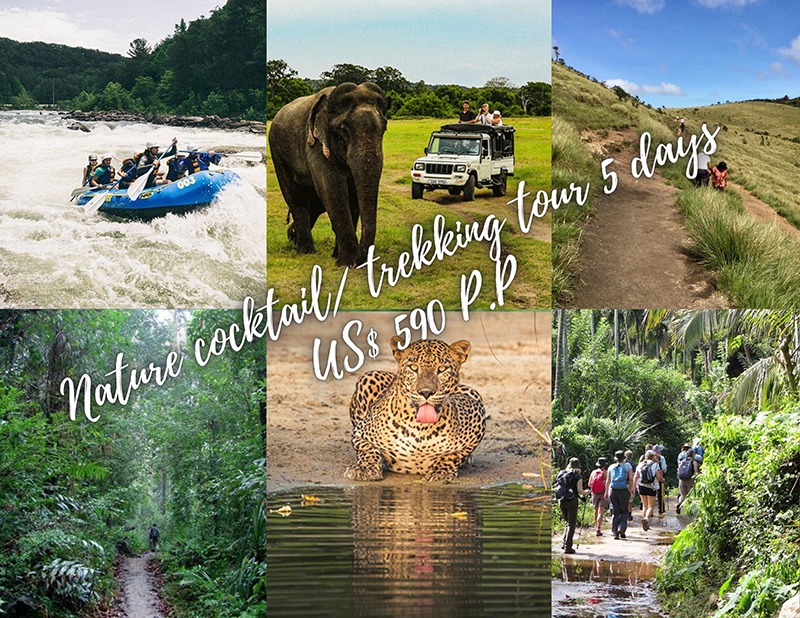
SRI LANKA OFF THE BEATEN TRACK BLUE BEACH ISLAND SOUTHERN PROVINCE
The vast southern coastal region is another Off the Beaten Track locality in Sri Lanka and it can be best described as Sri Lanka’s “wild south”. Much of this region is consisting of the thickly forested countryside dominated by thorn bushes and species of dry zone trees and plants. The extensive, off-the-beaten-track pristine beaches of southern Sri Lanka, are largely unexplored and untouched by tourist traffic.
Blue Beach Island Blue beach island is located in Nilwella, Dikwella, Matara in southern Sri Lanka. Blue beach island and the mainland are connected with a sandbank, while travellers can reach the island by taking a walk on the sand bank. The sea around Blue beach island is considered to be ideal for snorkelling. Despite its natural beauty, Blue beach island remains an off-beaten path tourist attraction in Sri Lanka and only a few local travellers come to this island.
SRI LANKA IS OFF THE BEATEN TRACK -HAPUTALE
When it comes to the places in high-altitude areas for holidays in Sri Lanka, you would most likely opt for Nuwara Eliya. But what about quite unpopular Haputale? Tucked away from Nuwara Eliya on the western slope of the central mountain range, this laid-back mountain resort is a perfect off-the-beaten-track tourist attraction in Sri Lanka. This untouched wilderness lies 1431 meters above sea level. This mountain resort is scattered with patches of forests, tea gardens, cascading waterfalls, and small villages, and enclosed by soaring mountains crowned with a green blanket.
SRI LANKA ADVENTURE TOUR TO OFF-THE-BEATEN TRACK ATTRACTION MADU ESTUARY
Madu river wetland, Sri Lanka’s largest inhabited island complex, lies in the imposing Madu river estuary on Bentota beach. This Ramsar wetland is a haven for nature lovers. A world within a world, boating, and canoeing, in the wetland of the Madu River, is the best way to explore this off-the-beaten-track tourist attraction, which lies near the western coast beaches of Sri Lanka.
The wetland of Madu offers a plethora of off-the-beaten-track activities and most of them are water-based activities such as fishing, exploring mangrove forests, kayaking and visiting historical Buddhist temples on the island, all are on the bucket list of the visitors of this off-the-beaten-track attraction. Madu river estuary is one of the most popular places for Sri Lanka the beaten track tour mainly attracts travellers from southern and west coast beaches, due to the convenience of reaching out to Madu river from the southern and west coast beaches.
SIGIRIYA IS OFF THE BEATEN TRACK
Sigiriya rock fortress is one of the most popular off-the-beaten-track tourist attractions in Sri Lanka. For those who enjoy mountain climbing and feel not fit enough to climb Mt Everest, then it is time to consider the Sigiriya rock fortress. It is a lot easier to climb the Sigiriya rock fortress than gigantic mountains such as Mt Everest. This adventure does not last more than two hours and it is suitable for young and old as well. Sigiriya important is not only as an adventure destination but also due to historical factors.
Sigiriya is a UNESCO world heritage site and one of the oldest landscaped gardens in the world, built in the 5th century AD. At present, there is only one route to go in the upward direction of the rock. The steps provide a very easy climb for novices and experienced mountain climbers. Every climber is rewarded with a breathtaking view from the summit of the rock and some of the oldest paintings known as Sigiriya Apsaras halfway up the rock.
There are many dozens of places to explore off the beaten track in Sigiriya such as,
What are the popular tourist attractions in Sigiriya?
- Pidurangala rock
- Sigiriya wildlife reserve
- Sigiriya lake
- Hiriwadunna village
- Hurulu eco-park
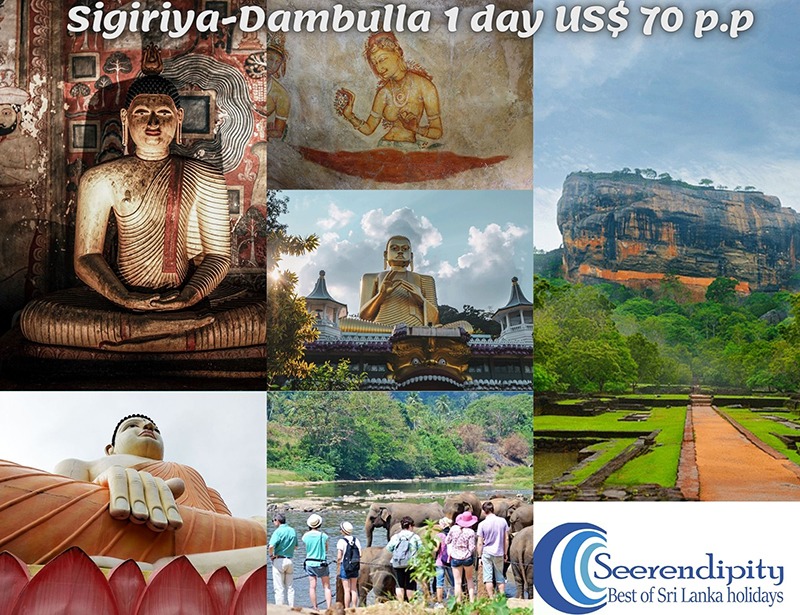
KATARAGAMA-OFF THE BEATEN TRACK TOURIST ATTRACTION IN SRI LANKA
If the hustle of Kandy is too much, Kataragama is a more peaceful alternative for you. The regions are often referred to as an abode by God Kataragama or Murugan and this is God’s own country. This holy off-the-beaten-track village is sitting along the banks of the Holy River known as “Menik Ganga”. The popular temple of Kataragama is visited by the believers of Buddhism, Hinduism and Islam. If you plan to visit the temple in the month of July, or August you are very lucky to witness one of the most colourful pageants on the island known as the Esala ceremony of Kataragama temple.
DOVA CAVE TEMPLE -OFF A BEATEN TRACK TOURIST ATTRACTION IN THE MOUNTAIN
Dova cave temple, situated about 10 km south of Bandarawela on the way to Kataragama and Yala from Nuwara Eliya, often referred to as a part of the underground tunnel network of Ravana, existed about 7000 years back. Today the temple is purely a Buddhist religious site with a beautifully painted image house and dozens of Buddha statues.
The present temple is dating back to the Polonnaruwa period (11th Century). The temple is secret to most people on the island and only a few travellers visit it. The temple is an unknown historical site in Sri Lanka and even it is not known to most local travellers. The temple has a natural cave, which is the most important attraction at the site. The spacious cave showcases a large number of Buddha statues and ancient paintings depicting scenes from the life of Buddha.
A rock-hewn, half-finished, standing Buddha statue is a highlight for the visitors to the temple, which is believed to be originated during the Polonnaruwa period. Based on this ancient Budah statue, over the years, historians have posited that the temple was inhabited even during the Polonnaruwa period. The 50 feet tall standing Buddha statue is not completed due to the internal conflict on the island, resulting from the arrival of south Indian invaders. Archaeologists opine that the temple was abandoned as it was not safe to live in due to the attacks of invaders.
VISITING OFF-THE-BEATEN-TRACK TOURIST ATTRACTION- MULGIRIGALA
Mulgirigala is one of the oldest temples on the island near Tangalle. This historical temple is dating back to the pre-Christian era (2nd Century BC). It had been a Buddhist temple complex, a learning centre as well as a library. There had been a large number of books and manuscripts, including many original versions of books, in the ancient library. The books were written by the scholarly monks of the monastery. The monks have copied every book written on the island, pertaining to religion or secular.
Scholars around the world had come to the library to get copies of valuable writings. The caves in the lower part of the temple had been used as shelters for the meditating monks. Scholars from all over the island had gathered here to study Buddhism and meditation. Today Mulgirigala is a valuable archaeological site and has been visited by foreigners and Sri Lankans.
The temple is located on four levels and at the most lover level of the ground is several caves that housed the library in ancient time. The second level is about 10 meters above the first level. Sacred Bo-tree, ancient granite caves that turned into image houses can be seen here. There are several caves with valuable Buddha statues at this level. The statues are dating back several centuries to the present.
The trail up to the summit or the highest level is about 500m long, but the climb is very steep. The climb gets steeped gradually and towards the end of the climb is the most difficult part, where the steps are carved onto the solid rock. The third level of the climb houses several granite caves and you are rewarded with a panoramic view of the surrounding lush green vegetation.
The third level skirts the edge of a more than 1000ft sheer cliff. A large number of ancient Buddha statues and paintings can be seen here. Some of the statues are renovated and they are in very good condition. But paintings are in a dilapidated condition, and they are not conserved during the last several centuries.
The last portion of the climb is the most difficult party to climb due to the narrowness and steepness of the climb, in some places, there is hardly any room to move your body, during the climb. The climb culminated with the view of the historical Stupa and patches of dry zone evergreen in southern Sri Lanka.
NEGOMBO LAGOON
You can be forgiven if you had no idea about the Negombo lagoon and its mangrove vegetation. Negombo lagoon has a large extent of mangrove forest and it is one of the largest mangrove forests in the country. Despite its importance as one of the last remaining mangrove forests in the country, it is not on most Sri Lanka tour itineraries. However, this fascinating and remarkable natural forest definitely worth a visit.
BUNDALA NATIONAL PARK- OFF A BEATEN-TRACK TOURIST SITE TO SPOT WILDLIFE
Are you hoping to visit Yala national park but like to avoid the crowd? It is only 1-hour drive to Bundala national park from Yale wildlife reserve. Bundala national park is located adjoining the Yala wildlife reserve and in Bundala also visitors can see the most animal that roams in the Yala national park. Bundala is ranked among the best places to spot a large number of bird species. Bundala is included in every bird-watching tour in Sri Lanka. Bundala is the resting place of a bird that migrates to the southern hemisphere in the months of October to March from Europe.

MUTHURAJAWELA WETLAND-OFF THE BEATEN TRACK TOURIST ATTRACTION COLOMBO
Muthurajawela wetland is located about 20 km from the commercial centre, Colombo city tour of Sri Lanka. It is a heaven for nature lovers. Muthurajawela is abundant in various species of mangroves and their inhabitants. It is inhabited by a large number of fish species, animals such as crocodiles, monitors, monkeys, deer, reptiles, birds and insects. It can be described as a must-visited place for bird watchers, animal lovers and nature enthusiasts.
A large number of shallow waterways flow into the wetland, nourishing it with the earth’s residue. Hence it is very rich in various types of mangroves. Muthurajawela acts as a floodwater trapper, allowing the excess water to flow into it during heavy rain. It can be best explored by boat; a boat tour through the wetland on the shallow waterways allows you to enjoy the riverine environment of this natural wetland.
Make sure you have an experienced tour guide to guide you and explain to you the vast diverse wildlife that includes long-tail leaf monkeys, Crocodiles and a large array of aquatic bird species. The boat tour usually starts early in the morning or in the evening and lasts about four hours. During this time the animals are most active and the birds also can be best observed.
WHAT IS THE POPULAR OFF-THE-BEATEN-TRACK TOURIST ATTRACTION IN SRI LANKA FOR DIVING AND SNORKELLING?
Pigeon Island marine sanctuary on the east coast is one of the least popular diving and snorkelling site in Sri Lanka. is located some 20 km away from the main city of Trincomalee on the east coast of Sri Lanka. It is a world-class diving spot and attracts a large number of divers every year. Pigeon Island marine sanctuary is very rich in marine life and very suitable for experienced and novice divers alike. It has a large number of coral reefs starting from the shallow waters and spreading to the Deep Ocean.
The marine park covers the pigeon island and its surrounding. Pigeon Island is about 5 nautical miles from the east coast beach holiday destination Nilaweli. Large numbers of people come here for Snorkelling and diving and they are fascinated by the diversity of exotic fish species living around the reefs. The waters around pigeon island are also suitable for whale watching, dolphin watching, fishing and shipwrecks exploration.
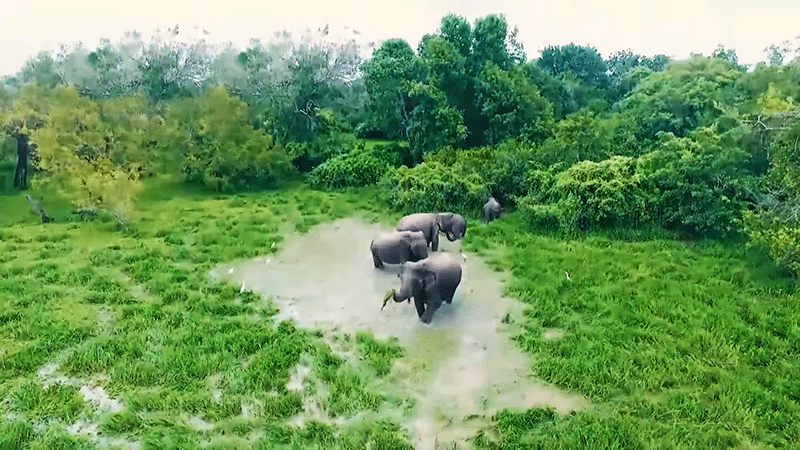
OFF THE BEATEN TRACK TOURIST ATTRACTION SRI LANKA- UDAWALAWE NATIONAL PARK
The Udawalawe national park is one of the most popular national parks on the west coast of Sri Lanka. It can be easily reached from the beach holiday destinations on the west coast of the island. Udawalawe is one of the most visited national parks in the country. Udawalawe offers many possibilities for off-the-beaten-track tours in Sri Lanka such as trekking, caving, rainforest exploration tour, kayaking and Sri Lanka wildlife tours.
The national park was established in the 1960s and is popular for elephant watching. There are large numbers of elephants in Udawalawe national park due to the abundance of elephant foods, water tanks and the large land area allocated for animals. Udawlawe national park gives a better opportunity to spot wild elephants compared to other national parks on the island. This national park is spread over the dry zone of Sri Lanka and is located adjoining the Udawalawe reservoir. The national park is inhabited by a large number of animals such as elephants, leopards, bears, and crocodiles.
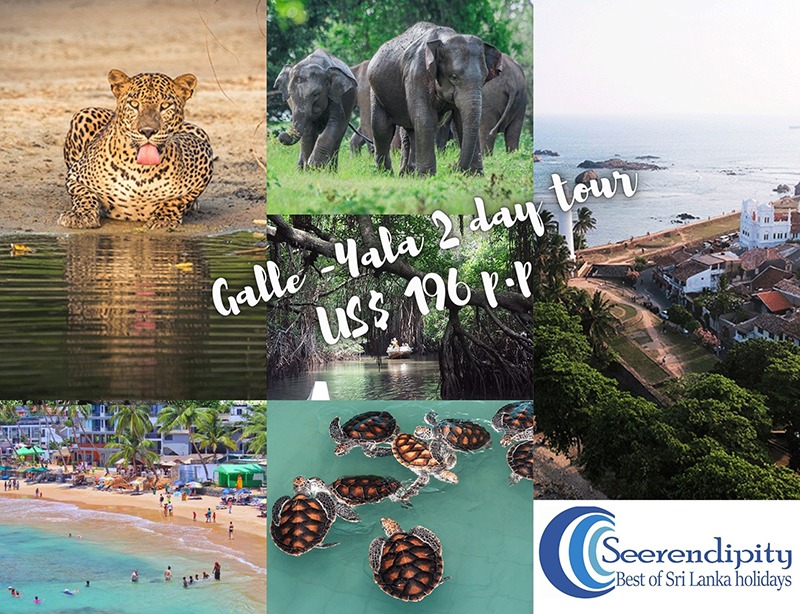
SPOTTING LEOPARDS AT OFF-THE-BEATEN-TRACK TOURIST ATTRACTION WILPATTU
One of the distinct features of the park is the existence “Willus” (Natural lakes), these are sand-rimmed natural basins, that are filled up with rainwater. The number of Willus, as well as tanks, exceeds many dozens and they are important water storage facilities in the park
The national park is located in northeast Sri Lanka near the cultural triangle. The park can be added to the tours and excursions aimed at visiting Anuradhapura because it is located on the main road from Colombo to Anuradhapura. It provides easy access for travellers who visit historical sites such as Anuradhapura, Polonnaruwa and Yapahuwa. Wilpattu national park is one of the most popular spots for watching leopards in Asia. It is inhabited by a large number of leopards and was closed for more than 30 years due to security reasons. Wilpattu is the largest national park in the country and is spread over 1317 square kilometres.
OFF-THE-BEATEN-TRACK TOURIST ATTRACTION SRI LANKA FOR ADVENTURE SPORTS-KITULGALA
Kitulgala in the Sabaragamuwa province is a very popular Sri Lanka off-the-beaten-track holiday destination, which attracts many adventure holiday seekers and nature lovers, who come to engage in adrenaline-pumping activities such as mountain climbing, rock climbing, waterfall abseiling, white water rafting etc. However, it is not on the radar of most travellers in Sri Lanka, therefore, it attracts only a fraction travellers, who venture on Sri Lanka tours. This tiny remote village lies on the Awissawella-Nuwara Eliya main road and travellers can easily reach Kitulgala By road. Due to its close proximity to Colombo, Kitulgala is a very potential destination for one-day trips in Sri Lanka from Colombo and many other beach resorts.
OFF THE BEATEN TRACK TOURIST ATTRACTION FOR HIKING-ADMAS PEAK
Adams peak is a hidden gem located on the western slope of Sri Lanka’s hill country. It is one of the uncommon places to visit with regards to most foreign travellers because most foreigners are not aware of it. The hike at Adams peak is suitable for nature lovers and adventure enthusiasts. If you are fancy of gorgeous scenery and like to spend time with mother nature, this is a perfect opportunity. The hike at Adams peak lasts about 5 hours and throughout the hike, you see only the endless lush green forest. Usually, the hike at Adams peak starts at midnight and culminates by reaching the summit at around 5.00 am, enabling the visitors to witness the sunrise. The view of sunrise from Adams peak is considered to be one of the most beautiful scenery and a large number of people make it a reason to climb the mountain.
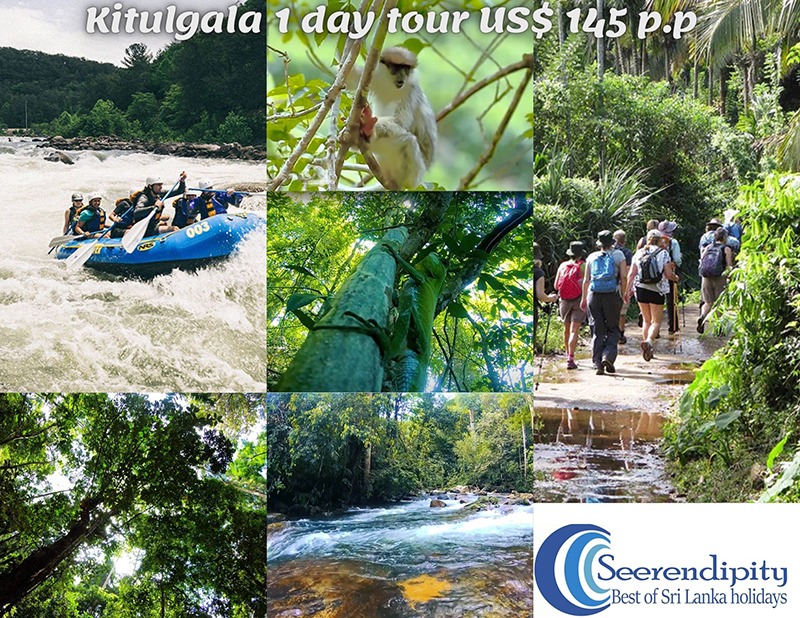
OFF THE BEATEN TRACK BEACHES SRI LANKA -KALPITIYA
Lying elbow-to-elbow with other travellers is not usual at pigeon island like most other popular beaches on the island because there is ample empty space around you. This stretch of beach is tucked away from the main island, off the northwest coast of Sri Lanka. The Kalpitiya beach and the Puttalam lagoon are still the best-kept secrets for most travellers. The remoteness of the west coast is the main reason for its unpopularity among travellers.
Kalpitiya beach has a rugged and rocky terrain, which resulted in the sea erosion that takes place over the many past millennia. Geologists opine that this off-the-beaten-track beach had been much bigger than what we see today, however it got smaller in the wrath of erosion. It is in total isolation during the off-peak holiday season on the east coast (April -Nov)), However, you can encounter a few foreigners here during the peak holiday season on the east coast (Nov-April).
IFS POPHAM ARBORETUM
IFS Popham arboretum is a forest managed by the Organization of Ruk Rakaganno (protectors of trees). According to the Oxford English Dictionary, the definition of these two words is ‘A place devoted to the cultivation and exhibition of the rare tree; a botanical tree garden. Popham arboretum is a classic example of forest regeneration on the island.
The forest is located in the heart of the cultural triangle of Sri Lanka; it is just less than an hour’s drive from Dambulla. IFS Popham arboretum is a forest of valuable hardwood species in the country. It has collection specimens such as ebony (Diospyros ebenum), satinwood (Chloroxylon swietenia), tamarind (Tamarindus indica), Ceylon oak (Diospyros chloroxylon), Jack tree (Artocarpus heterophyllus), Ironwood (Mesua nagassarium). This valuable forest provides a tranquil and peaceful surrounding amidst valuable tropical trees.
One can easily reach this forest along the wide road from the world heritage sites of Dambulla and Sigiriya. The cultural triangle of Sri Lanka is popular for the number of historical sites and natural wealth in the region is largely forgotten. It is very rarely one visits important places such as IFS Popham arboretum or ironwood forest. The visitor centre of IFS Popham Arboretum was designed by the popular architect of Jeffrey Bawa, The internationally acclaimed Sri Lanka architect.
The entrance to this valuable site costs a fraction of the money that one spends for the entrance to nearby cultural sites. Even though the cultural triangle attracts hundreds of thousands of people every month, very few people were visiting this valuable secondary forest. According to the information the trend is changed during the past few years, suggesting that people are becoming more enthusiastic about nature. With illegal timber harvesting, some of the valuable hardwood species such as ebony have become extremely rare in the environment. But fortunately, places like the IFS Popham arboretum come in handy to see the living specimen of these rare trees.
The forest harbours around seventy different species of trees. The forest has created a very attractive environment for a large number of animal species. It harbours many species of wild and rare creatures. It is inhabited by animals such as the White-spotted mouse-deer (Moshiola meeminna), dry zone slender loris (Loris tardigradus tardigradus), and Sri Lankan giant squirrel (Rtufa macroura). Red Jungle Fowl (Gallus gallus), Blue Tailed Bee Eater (Merops philippinus), and Grey Hornbill (Ocyceros birostrifs) are the most common birds here.
The area where it is situated in the dry zone was covered with thick jungle about 50 years back. But due to the demand for wood and expanding the human settlement, the forest cover was reduced to thorn shrubs. IFS Popham arboretum was initiated by Sam Popham, a Second World War sailor and a tea planter. He graduated from Cambridge, and he was a nature lover and highly interested in the beautiful forests of Sri Lanka. He started to develop this secondary forest, as an experiment known as ‘Popham method’ in 1963.
The method he followed was simple but proved to be successful. The shrubs were removed in the initial stage and the forest was allowed to grow its own. But the saplings of trees were procured from the outside. The native species of trees grew well even in the dry weather that prevailed in the area and needed minor supervision. Human intervention was needed only in a situation such as a wildfire or destruction caused by animals such as cattle. It has developed into a fully grown secondary evergreen dry zone forest within a short period of time.
After about fifty years and all the hard work, Popham returned to his native country (England), due to ill health. His ecological treasure was handed over to IFS (Institute of Fundamental studies); it was further expanded under their supervision before being handed over to the society of Ruk Rakaganno in 2005. According to the naturalist, it is very hard to find a collection of valuable trees like here and it is a very significant ecological achievement of Mr Popham.
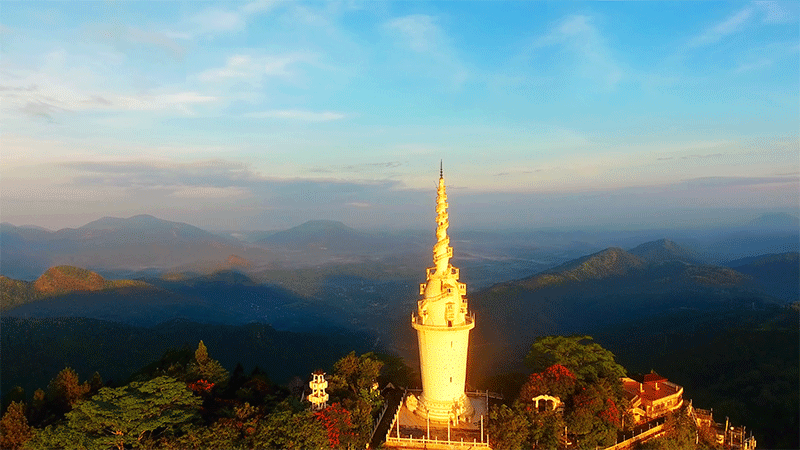
OFF-THE-BEATEN-TRACK TOURIST ATTRACTION IN KANDY- AMBULUWAWA TOWER
Ambuluwawa is one of the least known tourist attractions on the Island. This is an off-the-beaten-track tourist attraction tucked away from the city of Kandy near Gampla town. It is just 5 km away from Gampola. As you travel from Kandy to Nuwara Eliya on the upcountry main road, you can see a massive tower built in the form of a dagoba (dome-shaped building) on a mountain. The mountain is called Ambuluwawa mountain as the tower sits on the Ambuluwawa mountain it has been given the name “Ambukuwawa Tower”.
This off-the-beaten-track tourist attraction is visited by very few travellers due to its unpopularity. The height of the tower is 48 meters and command a breathtaking view over the surrounding mountain and valleys.
Ambuluwawa is a forest reserve with high biodiversity. Ambukluwawa forest reserve harbours a large number of faun and Flora species. The breathtaking view is the most important reward for travellers who climb the Ambulkuwawa mountain.
BIO-DIVERSITY OF ANBULUWAWA
A survey carried out by a group of students of the University of Jayawardenapura has published below statistics pertaining to the biodiversity of Ambuluwawa. The survey was done in the months of January and February 2003. The total number of species discovered at Amubuluwawa is 126 species.
11 mammalian species, including 01 endemic
59 avian species including 07 endemic species
30 reptilian species including 13 endemic species
13 amphibian species including 06 endemic species
13 butterfly species including 02 endemic species

OFF THE BEATEN TRACK BEACH IN SOUTHERN SRI LANKA-JUNGLE BEACH
Jungle beach lies on the south coast of Sri Lanka between Galle and Mirissa. Galle, Unawatuna, Ahangama, and Koggala are some of the most popular beaches on the south coast and are visited by hordes of travellers. However, Jungle beach is a secluded beach surrounded by a tropical jungle.
Jungle beach is tucked away from Galle city and it is a very unpopular stretch of beaches. Therefore, this off-the-beaten-track beach lies in isolation. The beach has a very wide sandy beach as well as shallow water, giving you the best opportunity to sun, sea and sand. The best time of the year to visit jungle beach is from November to April parallel to the northeast monsoon. During this period the sea is very calm and quiet providing the best conditions for swimming, snorkelling and swimming.
PAHIYANALA GRANITE CAVE
For millennia, the pristine rugged terrain around Kitulagla has seen many civilizations come and go. However, the stone age human of Sri Lanka, better known as homo sapiens balangodensis (Balangoda Man), lived on the island about 40,000 years ago. According to the latest findings the Balangoda Man lived on hunting as well as agriculture. The pristine forested area around Pahiyanagala cave had been the favourite hunting ground of Homo sapiens balangodensis. They used to have a cave-dwelling life while hunting as well as farming was the main source of food.
The latest discovery at the Pahiyanagla, by Oshan Wedage, a reputed archaeologist from Colombo, confirms that Balangoda man had used the Arrowheads for hunting fast-moving animals such as squirrels and monitors, suggesting that Bakangoda man was the first, who used arrows after in African continent. This offer the beaten track tourist site is visited only by a few travellers every year. However, it produces a great source of evidence about Sri Lanka’s pre-historic humans. The archaeologists have discovered many skeletons and as well as stone implements used by these ancient tribal folk.
WARNAGALA FOREST
Warnagala forest is located in Kuruvita of Ratnapura district. Warnagala forest is one of the easiest one-day trip places from Colombo, however, it is not popular among travellers; it is off the beaten track tourist place for most travellers. Warnagala forest is not part of most Sri Lanka tour itineraries. Perhaps the travellers may recognize its ecological importance and it may attract some travellers in the time to come because it is declared a conservation zone in Jan 2022.
Warnagala is an important ecological asset of Sri Lanka. It has a very valuable ecosystem of high value for its lowland wet evergreen flora. It is reported that there are 383 species of plants and animals in this forest reserve consisting of 219 species of animals and 164 flowering plants. Podochilus warnagalensis, an endemic species in our country, has also been recorded in this reserve.
Eleven endangered species (11) and four (14) endangered and endangered species have been identified in the Warnagala Reserve. Webless Shrub Frog (Pseudophilautus hypomelas), an endemic species of frog were also found in this reserve.
OHIYA
If you love nature, untamed wilderness, cool climate, beautiful green-capped mountains, cascading waterfalls, and tea plantations with walking paths, Ohiya is one of the best off-the-beaten-track tourist attractions in Sri Lanka for you. Ohiya is one of the most scenic hill country laid-back villages with a small population. Most travellers reach Ohiya to enjoy the unique cool clime and beautiful surroundings. Perhaps, the railway station of Ohiya is the most popular among the travellers, which sits 1774 meters above sea level, making it the 3rd highest railway station on the island. If you take scenic Sri Lanka’s hill country rail journey, from Kandy to Nuwara Eliya or vice-a-versa, you are well on the way to seeing this railway station. It is located just after the 20th tunnel from the Kandy railway station on the hill country railway track.
Ohiya, the railway station is on the radar of many adventure enthusiasts and nature lovers. Because Ohiya railway station is the gateway to Horton plains national park, apart from Horton plains national park, Ohiya railway station provides easy access to many other tourist attractions such as Bambarkanda waterfall, Kalupahana, Yakhsyage kalupahana (the demon black lamp) etc. All these tourist attractions are natural tourist attractions and they are popular for camping as well as trekking and hiking.
LUNU GANGA (BAWAS GARDEN)
Jeffrey Bawa is a Sri Lankan-born architect, who had a massive impact on landscaping and architecture in Sri Lanka. In fact, his impact was gone beyond the borders of Sri Lanka and showed up in many places in southeast Asia. His expertise is seen in many large-scale and impotent constructions such as the Parliament building, and the Bluewater hotel. Lunu Ganga is his own private labour of love and he has poured a lot of love and attention into this garden. The garden is in unique many ways and he carefully personalized it to meet his taste. After his demise, the entire property of Lunu Ganga was taken under Bawa trust and they are under the purview of Bawa trust.
Bawa garden is spread over 25 acres and is located bordering the Bentota river. Bawa’s garden was a testing ground for his many innovative ideas before he introduce them to the real world. Now the garden is open to visitors, in fact, the visitors can have a guided tour across the Bawas garden to learn about the fascinating features of the garden. Visiting lunu Ganga allows you to get a clear picture of the life, work, and taste of this veteran architecture. Lunu Ganga showcases a massive collection of beautiful furniture featuring typical Sri Lankan architecture. The dozens of buildings are built in cooperation with old and modern Sri Lankan as well as foreign architecture.
If you wish to take any of the above-mentioned Sri Lanka off-the-beaten-track tours, Seerendipity tours are ready to make a suitable package for your Sri Lanka off-the-beaten-track tour. Please get in touch with us for more information at 0094-77-4440977 or admin@seerendipitytours.com.
Our articles under the title “Places to visit in Sri Lanka“
- 10 Best Places To Visit In Sri Lanka For Honeymoon In 2021
- 15 Best places to visit in Sri Lanka in 3 days
- 7 Places To Visit In Sri Lanka South Coast Itinerary
- 22 places to visit in Sri Lanka in 5 days
- 12 best places to visit in Sri Lanka in 2 days
- 15 Places to Visit In Sri Lanka In Two Weeks
- 18 Best Places to Visit in Sri Lanka in 14 Days
- 10 Places To Visit In Sri Lanka Trip Itinerary
- Places To Visit In Sri Lanka In 6 Days
- Best places to visit in Sri Lanka off the beaten track
- Places to visit in sri Lanka within one day
- Places to visit in Sri Lanka in 4 days
- Places To Visit In Sri Lanka In 7 Days
- 10 Best Places to Visit in Sri Lanka Itinerary 8 Days
- What are the 20 Best Places to Visit in Sri Lanka in December?
- What are the 6 best places to visit on a 5-day trip to Sri Lanka?
- 7 PLACES TO VISIT ON SRI LANKA HERITAGE TOURS
- 10 Places To Visit In 9 Days In Sri Lanka Car Tours
- 8 Days In Sri Lanka And 15 Best Places To Visit
- SIGIRIYA ROCK FORTRESS SRI LANKA AND PLACES TO VISIT IN SIGIRIYA
- What are the top 11 places to visit in Mirissa Sri Lanka?
- 17 Best Places To Visit On Sri Lanka Hill Country Tours
- What are the 10 best places to visit on the Kandy tea plantation tour?






Wonderful article on Sri Lanka off the beaten-track tourist places. We were in Sri Lanka a few years back and Sri Lanka is a beautiful country. We visited a few off-the-beaten-track tourist attractions you mentioned here like the Sinharaja rainforest. I must say that it was one of the best trusts we had in a rainforest. We relly enjoyed out trip to the sinharaja rainforest. Thanks for the nice article.
Excellent article on Sri Lanka off the beaten-track places. Your article gives some picture about the places that we don’t read much about
It is pity to hear what is going on Sri Lanka. I can’t believe their economical collapse and social unrest. Sri Lanka is a beautiful country and we visited a few places mentioned in this article about the “22 best places in Sri Lanka off the beaten track.
Very good article on Sri Lanka’s off-the-beaten track tourist places. A very long list of off-the-beaten-track places and it is difficult to choose few places by reading your description. Seems to be all very interesting places. We are hoping to tour in Sri Lanka towards the end of 2022 if the condition in Sri Lanka improves. Can you recommend a tour of Sri Lanka, we love nature, wildlife and a bit of adventure.
Hi Rena
Please take a look into this nature tour, I feel you like it (https://seerendipitytours.com/itinerary/sri-lanka-adventure-holidays-2/)
We traveled to Sri Lanka on a 2 weeks trip in 2018. Part of our holiday was dedicated to an adventure and nature tour because we love nature. We visited some of the off-the-beaten places you discuss in this article. It was a wonderful nature tour with plenty of time with nature and wildlife. Sri Lanka is a very beautiful country and it was one of the best trips we ever had.
I am so grateful for your post on Sri Lanka’s off-the-beaten-track tourist places. Really looking forward to reading more. Keep writing.
We like adventure activities and it is fun to go to places off the beaten track in any holiday destination. Very good article on Sri Lanka off-the-beaten-track tourist places, good job.
“I just could not go away your web site prior to suggesting that I really enjoyed the usual information a person provide for your guests? Is going to be again continuously to check up on new posts”